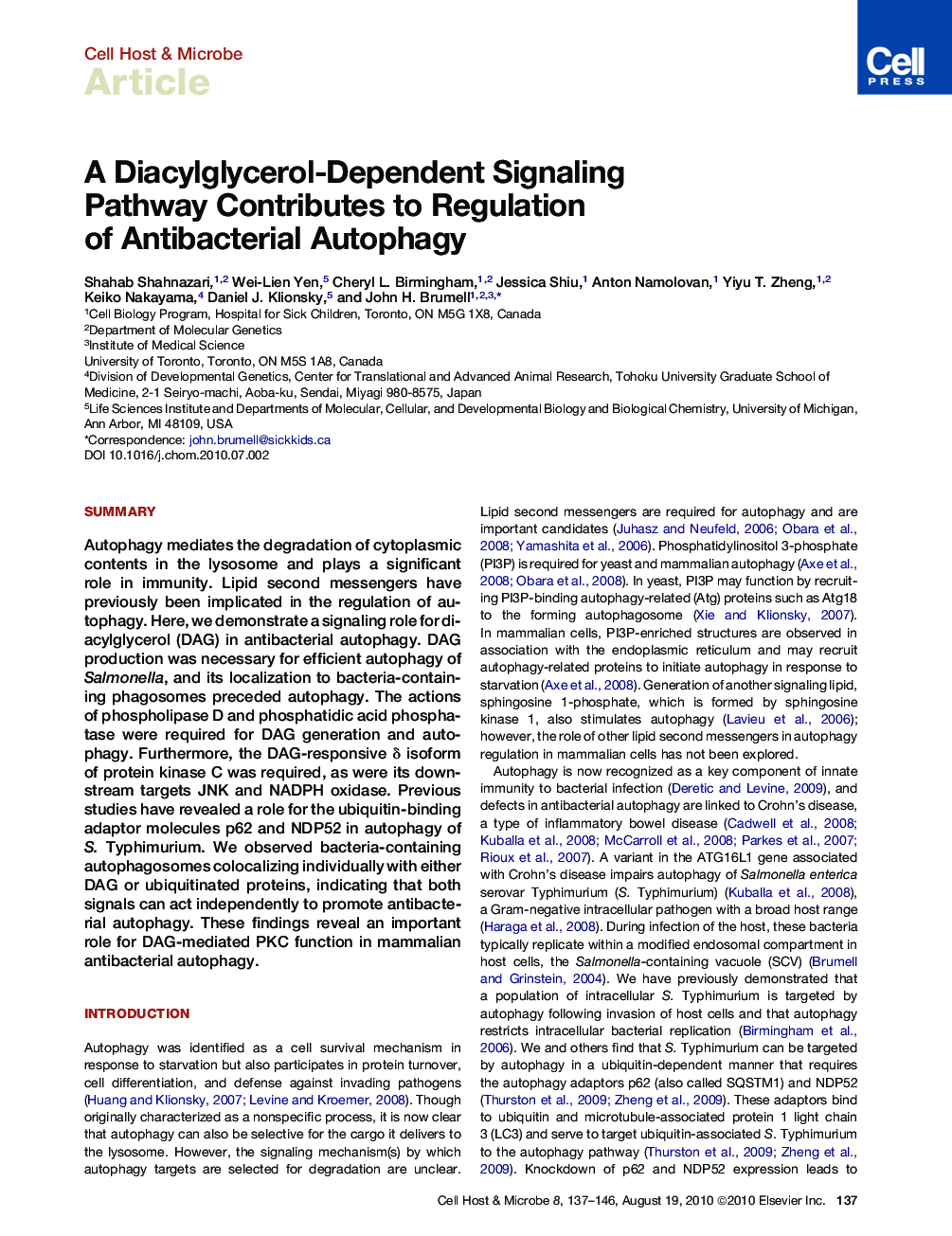| کد مقاله | کد نشریه | سال انتشار | مقاله انگلیسی | نسخه تمام متن |
|---|---|---|---|---|
| 4361360 | 1301375 | 2010 | 10 صفحه PDF | دانلود رایگان |

SummaryAutophagy mediates the degradation of cytoplasmic contents in the lysosome and plays a significant role in immunity. Lipid second messengers have previously been implicated in the regulation of autophagy. Here, we demonstrate a signaling role for diacylglycerol (DAG) in antibacterial autophagy. DAG production was necessary for efficient autophagy of Salmonella, and its localization to bacteria-containing phagosomes preceded autophagy. The actions of phospholipase D and phosphatidic acid phosphatase were required for DAG generation and autophagy. Furthermore, the DAG-responsive δ isoform of protein kinase C was required, as were its downstream targets JNK and NADPH oxidase. Previous studies have revealed a role for the ubiquitin-binding adaptor molecules p62 and NDP52 in autophagy of S. Typhimurium. We observed bacteria-containing autophagosomes colocalizing individually with either DAG or ubiquitinated proteins, indicating that both signals can act independently to promote antibacterial autophagy. These findings reveal an important role for DAG-mediated PKC function in mammalian antibacterial autophagy.PaperClip To listen to this audio, enable JavaScript on your browser. However, you can download and play the audio by clicking on the icon belowHelp with MP3 filesOptionsDownload audio (2000 K)
► Diacylglycerol (DAG) targets Salmonella for antibacterial autophagy
► DAG is generated by phosphatidic acid phosphatase and phospholipase D
► DAG is able to induce autophagy through the activation of PKCδ
► PKC has an evolutionarily conserved role in autophagy regulation
Journal: - Volume 8, Issue 2, 19 August 2010, Pages 137–146